Welcome to the fascinating world of giraffe coloring pages! Giraffes, with their long necks and distinctive spots, are some of the most beloved and captivating creatures on our planet. In this article, we invite you to embark on a creative journey as we present an educational experience that complements our delightful collection of giraffe-themed coloring sheets. Whether you’re a young artist or simply young at heart, these fun designs offer a fantastic opportunity to unleash your artistic flair and imagination. Get ready to immerse yourself in the wild beauty of giraffes & bring these magnificent animals to life with a burst of colors.
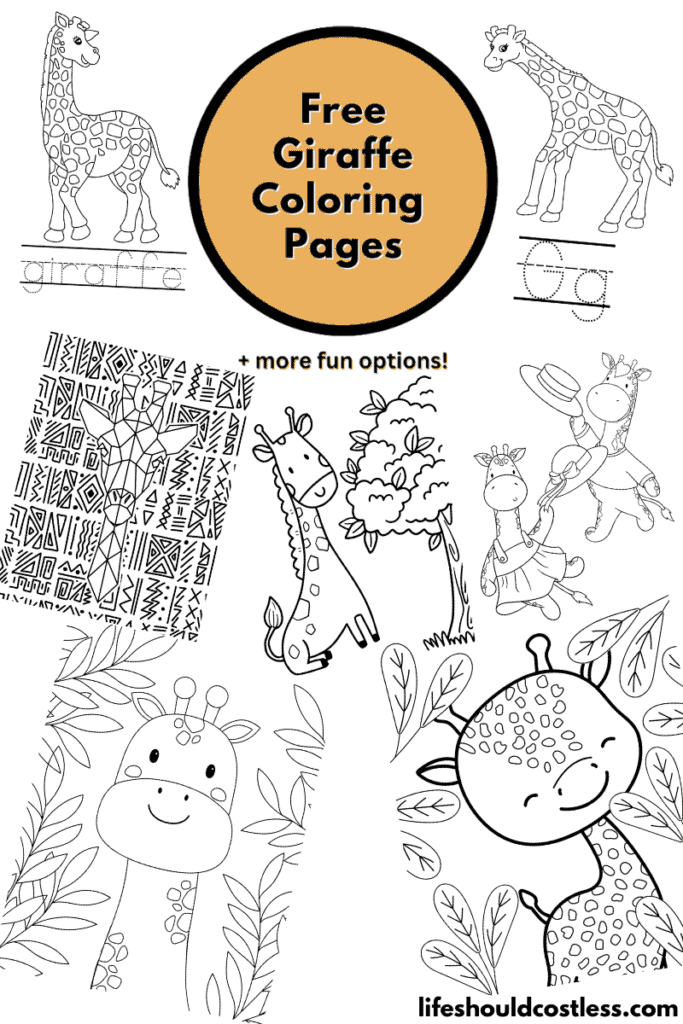
So grab your favorite coloring tools and let’s explore the enchanting world of giraffes!
Simply choose the design you prefer, save the downloadable PDF template for free, print it out, and enjoy coloring to your heart’s delight.
Alternatively, you can use these designs as embroidery patterns or draw inspiration for fine line tattoos.
Giraffe facts
For those who are new to my coloring pages, it’s worth mentioning that I offer you the choice to delve into the subject matter, allowing you to effortlessly transform it into an educational experience.
So, let’s get started with this opportunity!
Here are lots of fun and interesting, simplified, facts about giraffes (my reference source can be found here):
- Tallest Land Animals: Giraffes are the tallest land animals on Earth, with adult males standing up to 18 feet (5.5 meters) tall and females reaching about 16 feet (4.8 meters) in height. Their long necks alone can measure up to six feet (1.8 meters) in length.
- Unique Neck Structure: Contrary to popular belief, giraffes have the same number of neck vertebrae as most mammals, typically seven. However, each vertebra is significantly elongated, enabling them to reach high vegetation with ease.
- Giraffe Species: There are four distinct giraffe species: the Northern Giraffe, Southern Giraffe, Reticulated Giraffe, and Masai Giraffe. Each has subtle differences in coat patterns and geographic distribution.
- Spots as Fingerprints: Similar to human fingerprints, no two giraffes have the same spot patterns. These spots, along with their coloration, are unique to each individual giraffe, making them easily identifiable.
- Giraffe Tongue: Their prehensile tongue is an incredible adaptation, measuring up to 18 inches (45 cm) long. It helps them grasp and strip leaves from trees and shrubs.
- Blueish-black Tongue: The color of a giraffe’s tongue is not black, as it is often believed, but rather a purplish-blue. This color may serve to protect their tongues from sunburn while they feed on leaves.
- Social Animals: Giraffes are social creatures that often form loose groups called a “tower” or “journey.” These groups can consist of both males and females, but they are not highly structured like herds.
- Gentle Giants: Despite their imposing size, giraffes are known for their gentle and non-aggressive behavior towards both their own kind and other species. They are generally peaceful herbivores.
- Sleep Patterns: Giraffes have remarkably short sleep cycles, averaging around 5 to 30 minutes per day. They can sleep while standing or lying down, but often choose to rest in a standing position to avoid predators.
- Heart and Blood Pressure: To pump blood up their long necks to their brains, giraffes have an incredibly strong heart, weighing about 25 pounds (11 kg). Their blood pressure is two to three times higher than that of humans.
- Running Speed: Despite their size, giraffes can run at speeds of up to 35 miles per hour (56 km/h) for short distances, making them surprisingly agile when necessary.
- Calving Behavior: Female giraffes give birth standing up, and their calves drop nearly six feet to the ground during delivery. This process helps stimulate the newborn’s first breath and prepares them for life on their feet.
- Herbivorous Diet: Giraffes are strict herbivores, mainly feeding on leaves, flowers, fruits, and other plant materials. Their favorite food is acacia leaves, and their long necks are perfectly suited for reaching high foliage.
- No Vocal Cords: Unlike many other animals, giraffes lack vocal cords. Instead, they communicate through various sounds, including grunts, snorts, hisses, and occasional whistle-like sounds.
- Conservation Concerns: Giraffes are currently listed as a vulnerable species due to habitat loss, poaching, and human-wildlife conflict. Conservation efforts are crucial to protecting these majestic animals and their ecosystems.
From their towering height to their unique adaptations, giraffes are undeniably one of nature’s most captivating wonders.
Understanding more about these gentle giants adds to the appreciation of their significance in the animal kingdom.
We touched a bit on the subject, but there is loads more to learn about giraffes.
If you would like to continue on your knowledge-seeking quest, here are some other reputable resources to learn about giraffes while coloring:
- https://kids.nationalgeographic.com/animals/mammals/facts/giraffe
- https://kids.britannica.com/kids/article/giraffe/353182
- https://animals.sandiegozoo.org/animals/giraffe
- To see all of my free printables, go here.
- If you would like to see an alphabetized index of free printable coloring pages, go here!
- All of my animals coloring pages are found here.
- Or, my other mammals coloring pages can be found here.
Coloring tips
When you set out to color a picture of a giraffe, it can be a fun and creative experience.
Here are some of my best tips and tricks to help you make your giraffe artwork truly stand out:
- Reference Images: Use reference images of real giraffes or artistic illustrations to get an accurate idea of their coloration and markings. This will help you add realism or artistic flair to your coloring.
- Layering Colors: Experiment with layering different shades of colors to create depth and dimension. Start with lighter shades as a base and add darker shades gradually to achieve a more realistic effect.
- Use Earthy Tones: Giraffes have a distinctive coat with a mix of warm, earthy tones like browns, oranges, and yellows. Incorporate these colors into your coloring to capture their natural appearance.
- Spot Patterns: Pay attention to the spot patterns on the giraffe’s body. While each giraffe has a unique pattern, they generally consist of irregularly shaped spots with a defined border. Vary the size and shape of the spots to add visual interest.
- Texture Effects: To add texture to the giraffe’s fur, consider using various coloring techniques like stippling, cross-hatching, or blending with colored pencils. These techniques can simulate the appearance of fur.
- Contrasting Colors: Introduce subtle color contrasts in the shadows and highlights to create a more dynamic and three-dimensional look. Shadows can be slightly cooler in tone, while highlights can be warmer.
- Blending Tools: If you’re using colored pencils, consider using blending tools like a blending stump, tortillon, or colorless blender pencil to achieve smoother transitions between colors and to blend the layers seamlessly.
- Background Choice: Select a suitable background for your giraffe. You can opt for a simple background to keep the focus on the giraffe or create a more elaborate scene that complements the overall coloring page.
- Experiment with Mediums: Don’t be afraid to try different coloring mediums like markers, watercolors, or pastels to explore different effects and styles.
- Take Your Time: Coloring a detailed giraffe image can take time, so be patient and enjoy the process. Take breaks if needed to avoid strain and fatigue.
- Protective Sheets: If you’re using markers or pens, place a protective sheet of paper underneath your coloring page to prevent any ink bleeding onto the surface below.
- Practice and Learn: Coloring is a skill that improves with practice. Don’t be discouraged if your first attempt doesn’t turn out as expected. Keep practicing, learning from mistakes, and continually develop your coloring techniques.
Remember, coloring is about expressing your creativity and having fun.
So, let your imagination soar as you bring your giraffe coloring sheet to life!
Options For Printing:
Letter G is for giraffe writing practice worksheets
*My letter G is for giraffe coloring sheet printables are specifically designed to be used in a classroom setting, they are the only printable options on this page that do not need written permission to use in a public setting.
Please send the link to this post along if anyone asks you where you got them. Thank you!
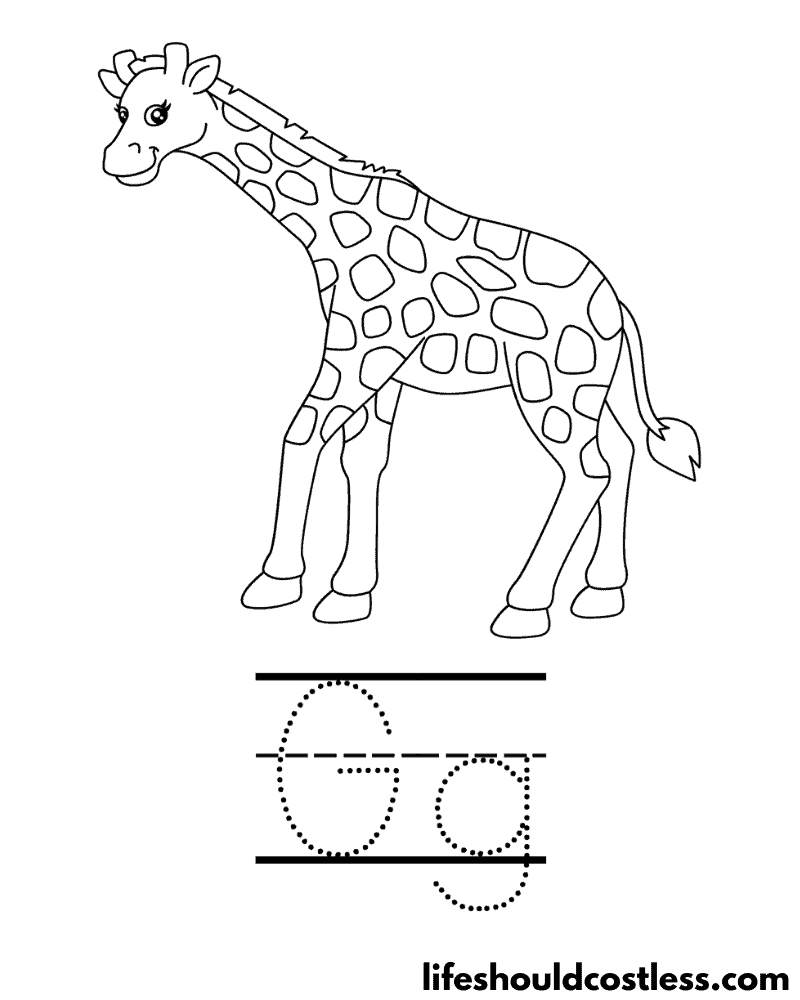
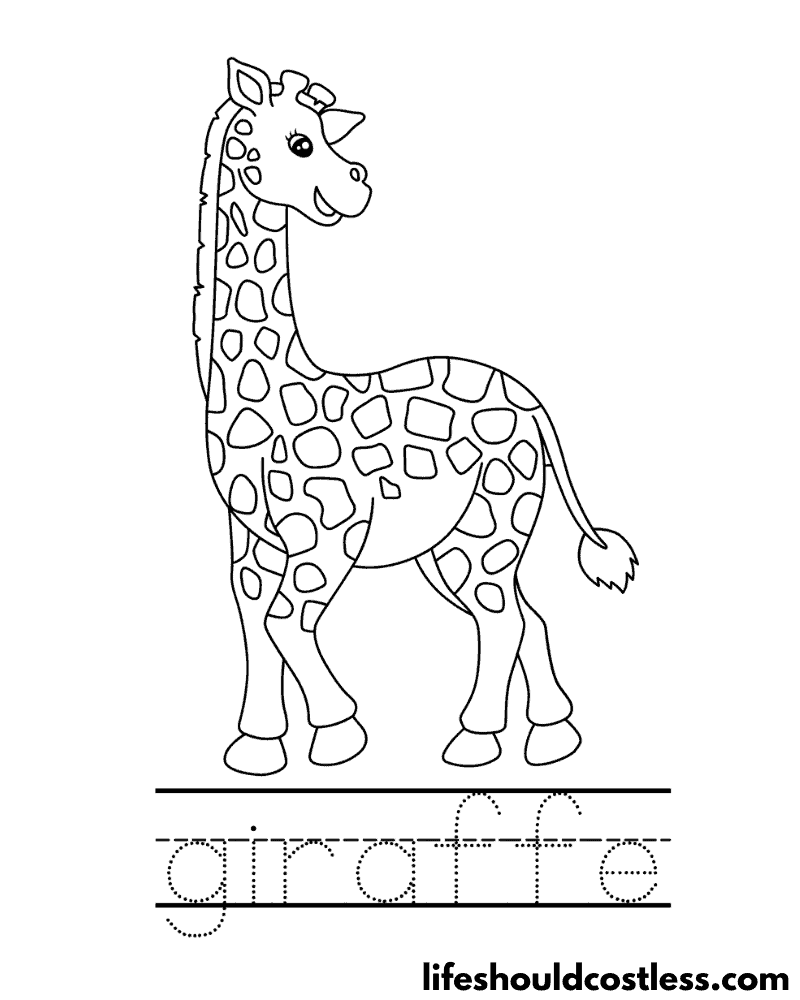
Various Giraffe Designs
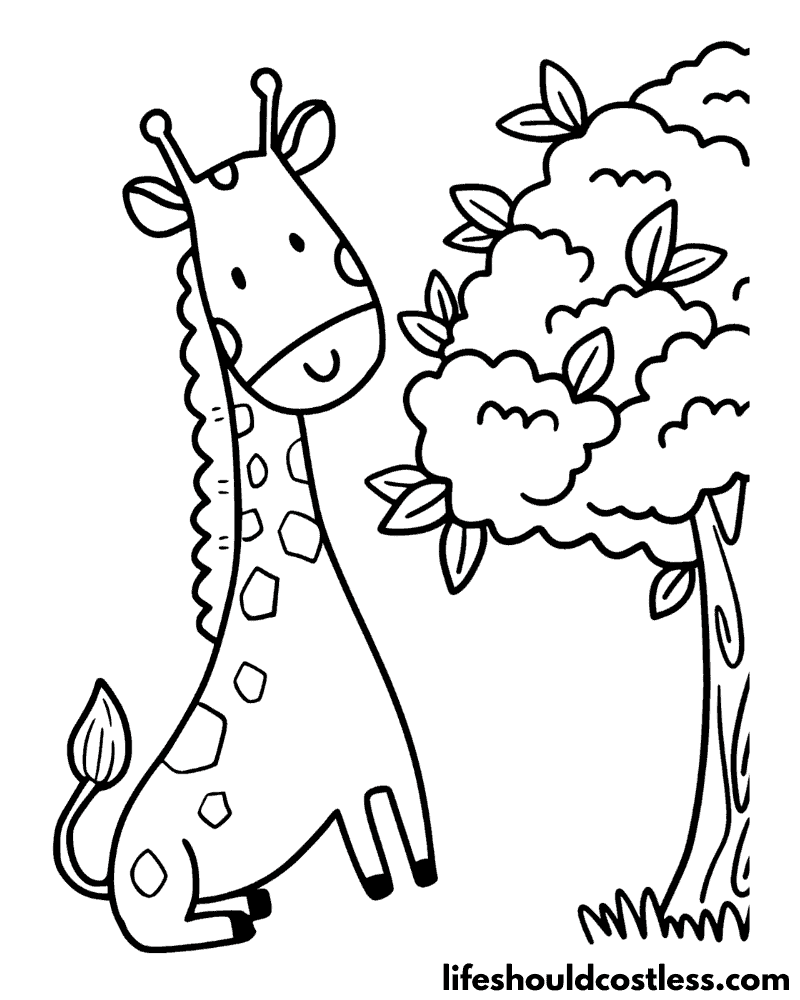
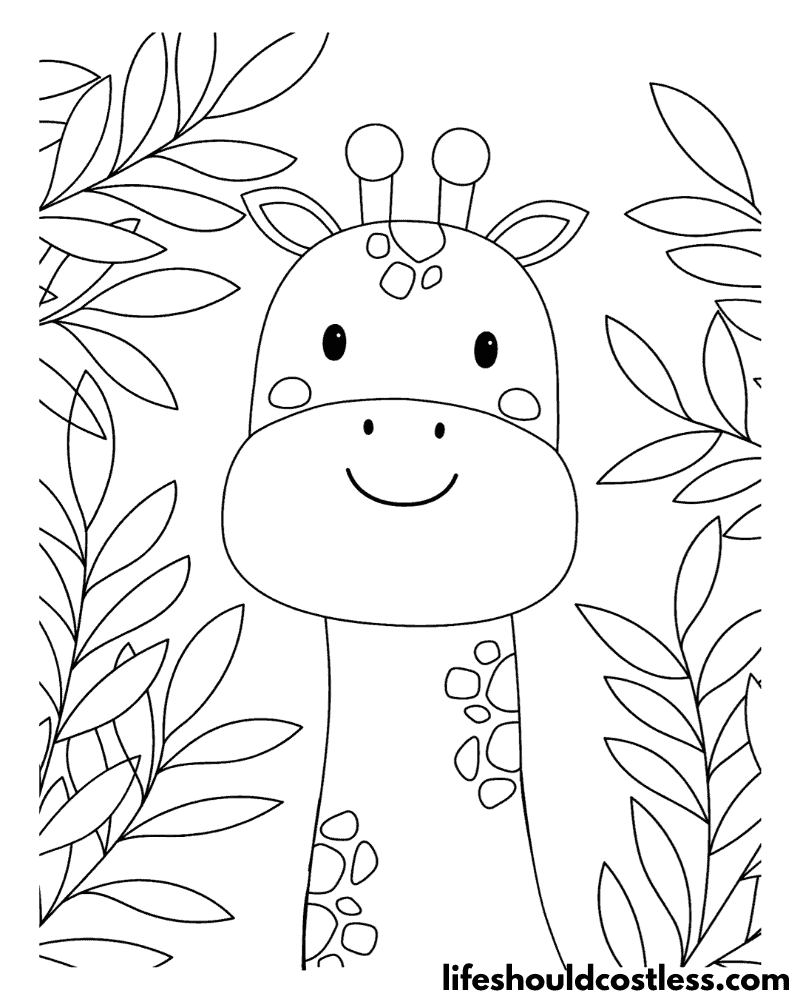
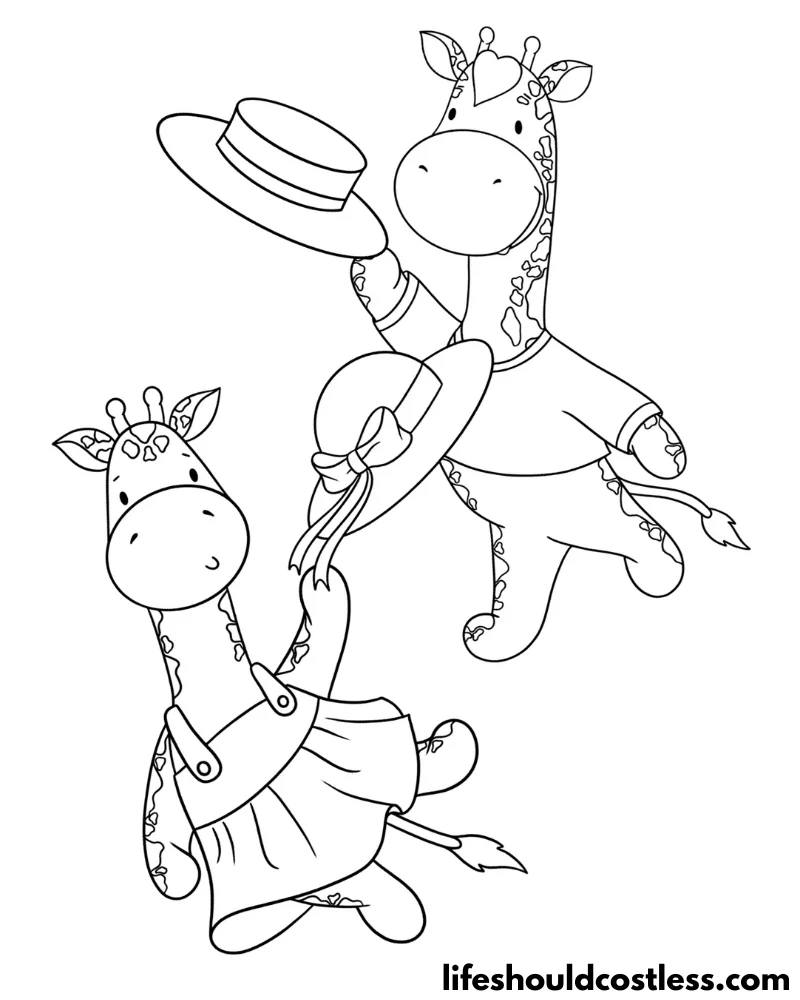
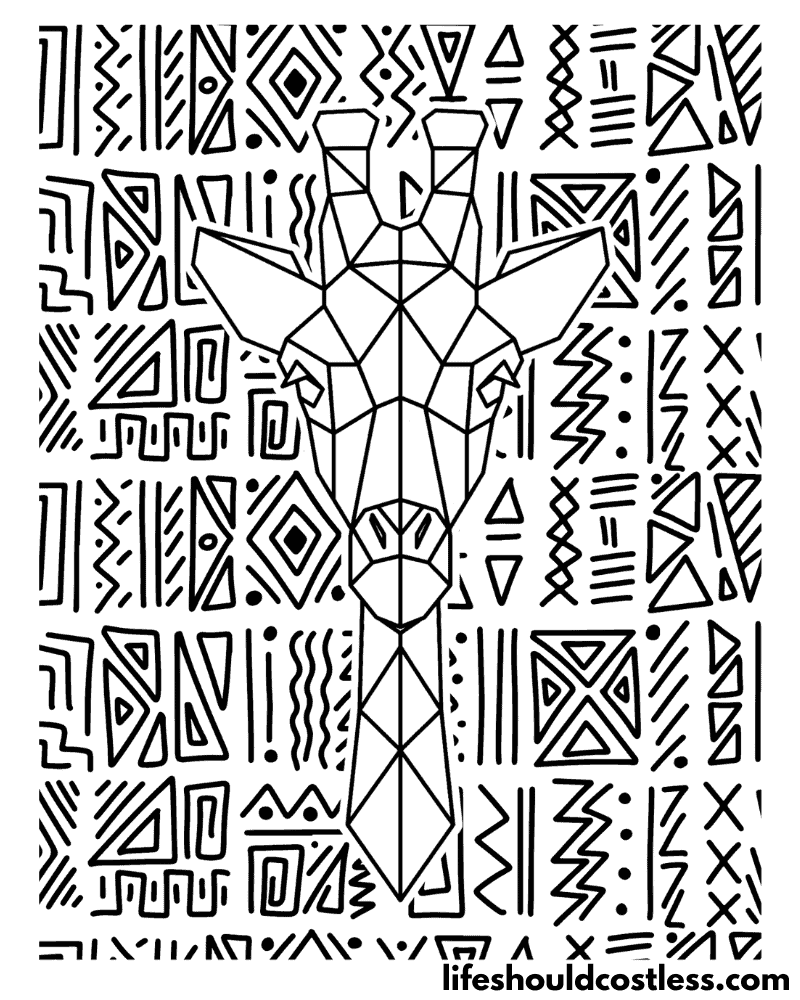
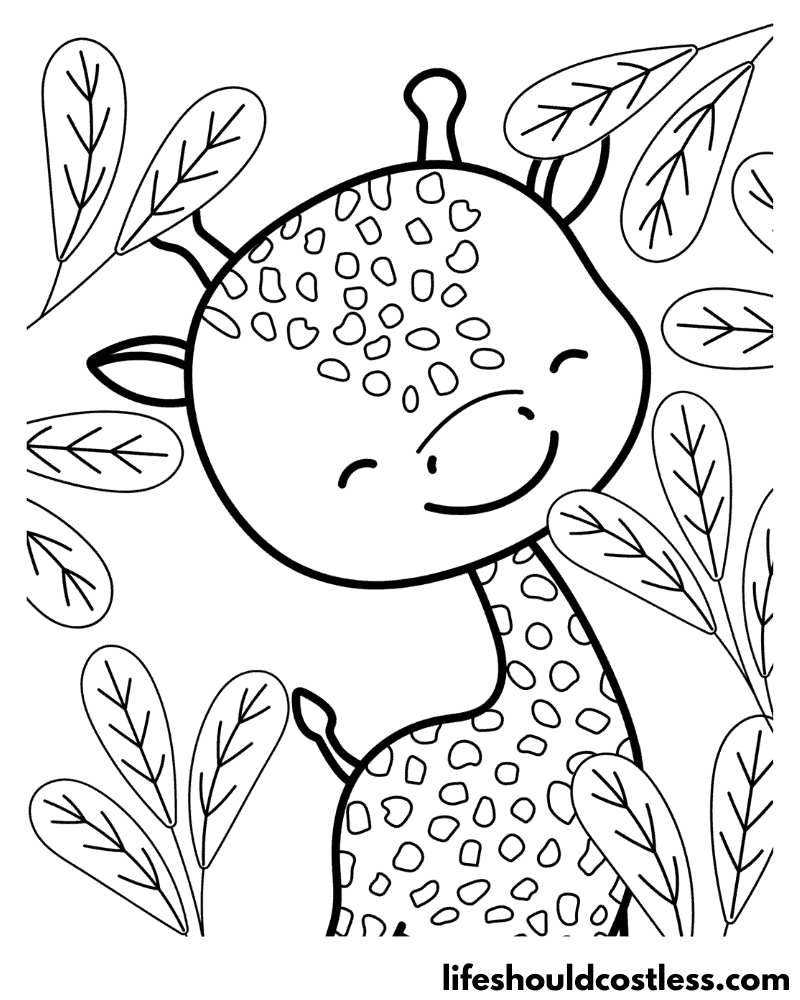
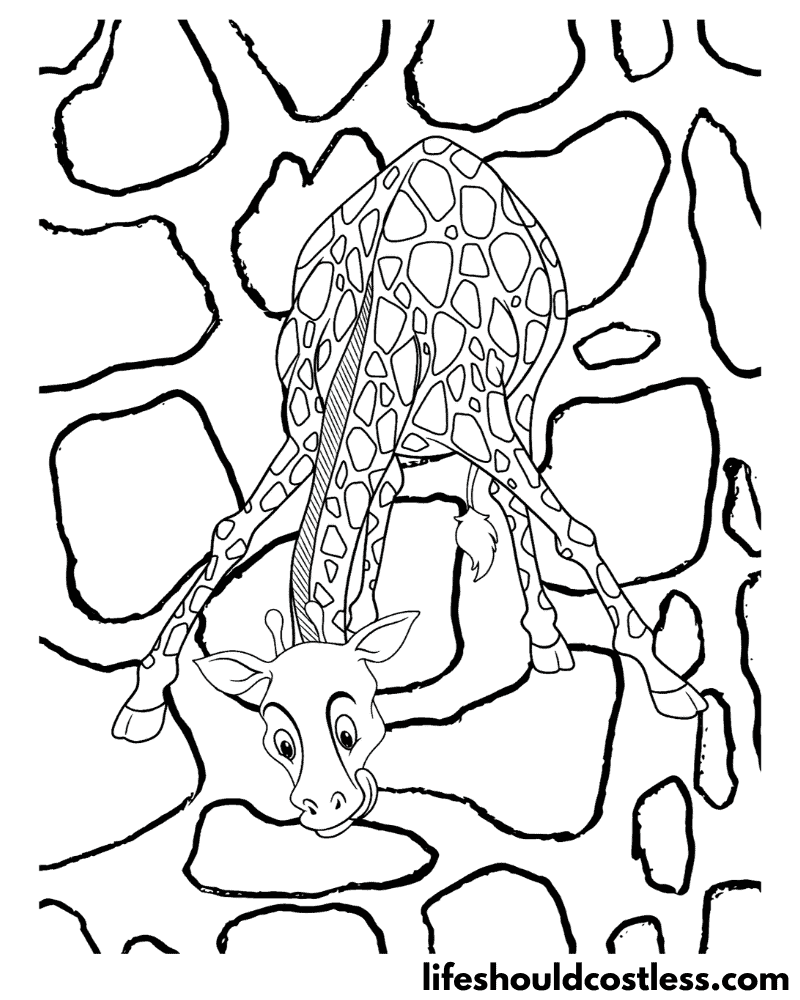
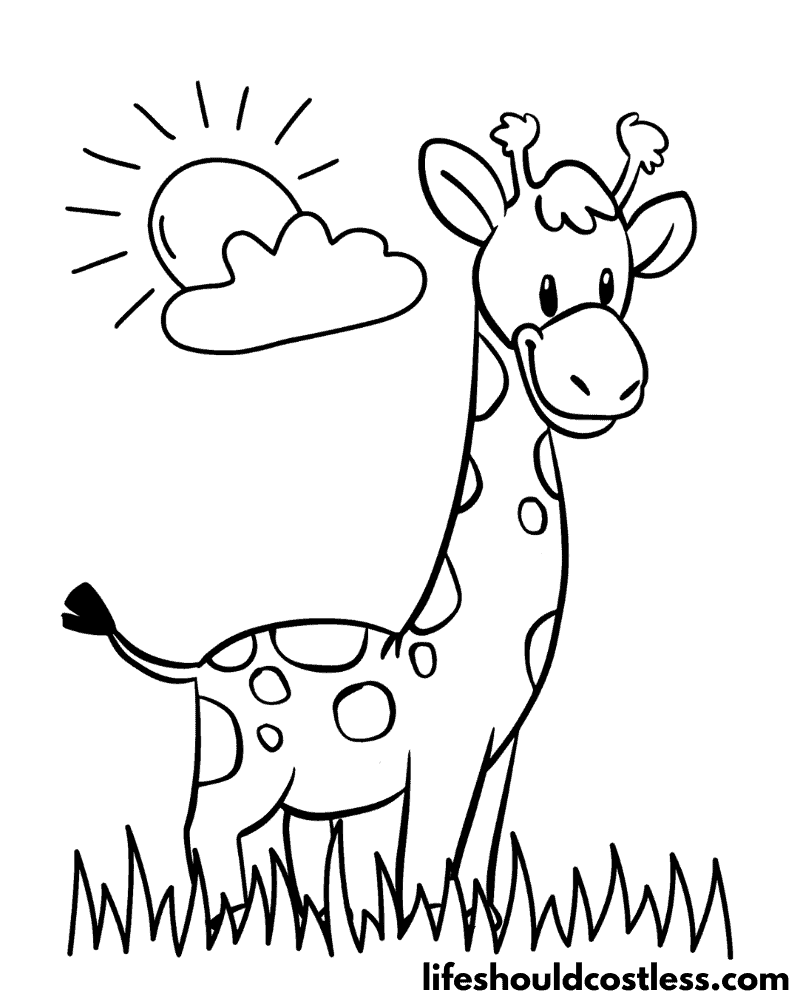
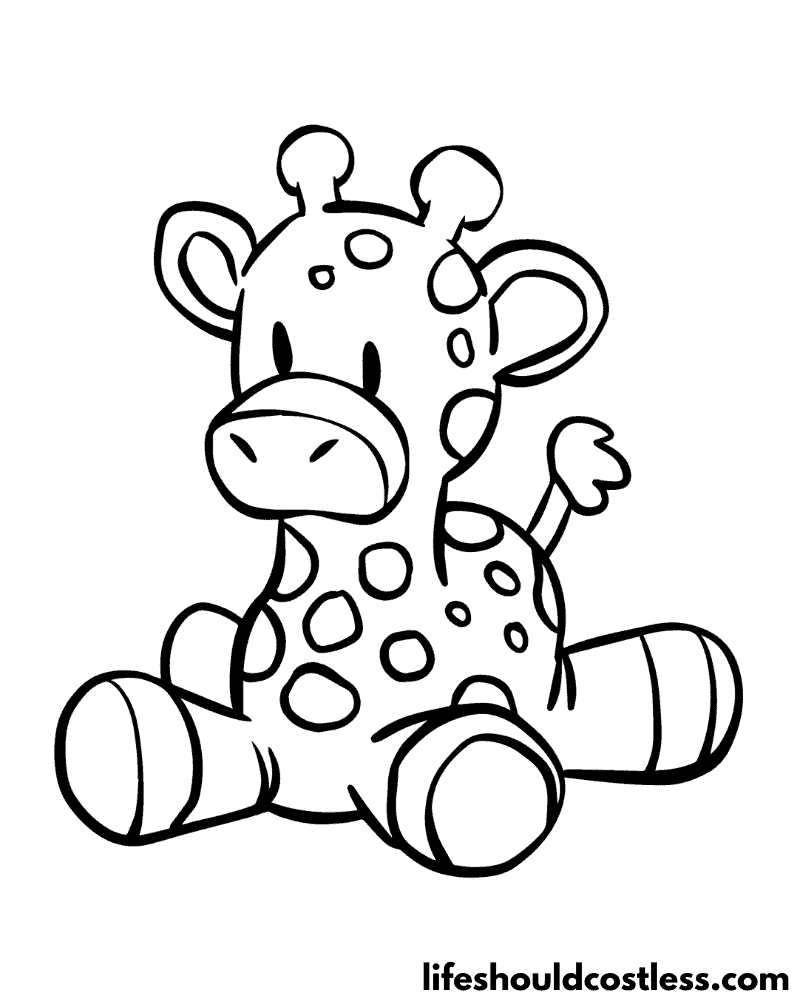
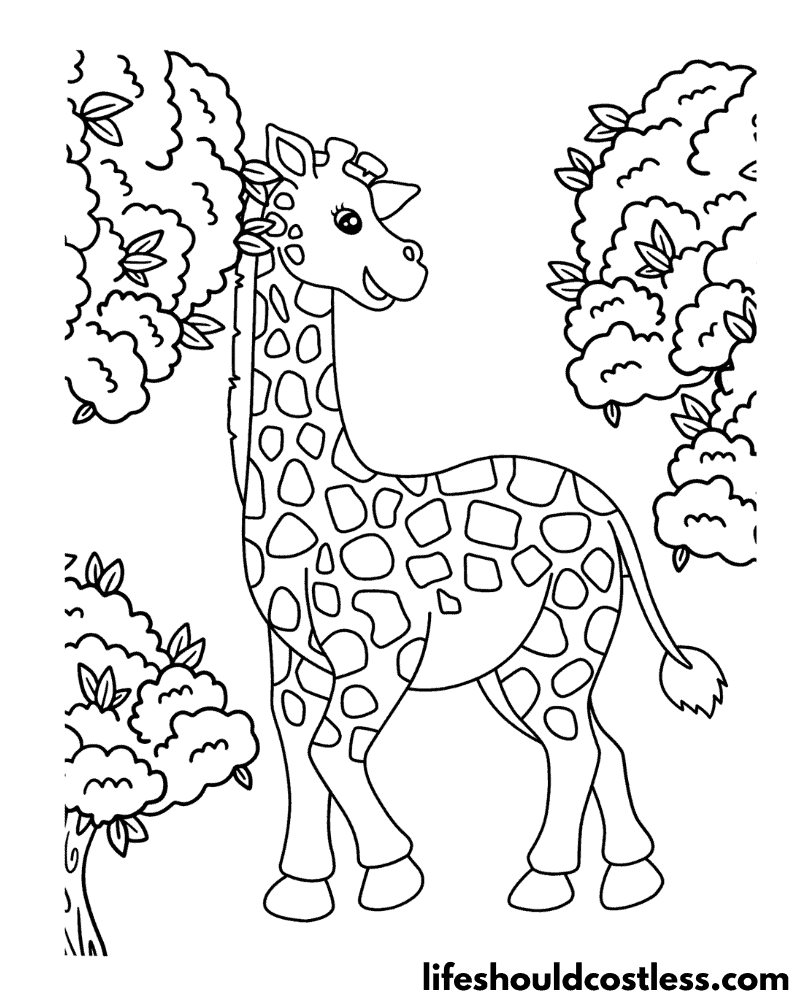
FAQ’s
The real color of a giraffe’s coat is a combination of warm earthy tones, primarily consisting of shades of brown, orange, and yellow.
The base color of their coat is usually a light beige, tan, or creamy color. Over this base color, giraffes have irregular patches or spots that can be various shades of brown, ranging from light brown to dark brown or even reddish-brown.
The spots are separated by creamy white spaces, creating a striking contrast that helps giraffes blend into their natural surroundings in the wild. These spots are unique to each giraffe, much like fingerprints are unique to each human.
Additionally, giraffes have white tufts of hair called ossicones on their heads and a long, dark-colored tongue, which further adds to their distinctive appearance.
The combination of these colors and patterns on their coat is essential for camouflage and provides an effective way to break up their silhouette in the dappled light of the savannah, where they primarily live.
Giraffes are neither yellow nor orange. Their coat coloration consists of a combination of warm earthy tones like brown, orange, and yellow, but their overall appearance can be described as a patchwork of irregular spots or blotches with defined borders.
These spots are typically orange-brown to dark brown in color, and they are separated by creamy white spaces.
The base color of their coat can be described as a mixture of beige, tan, or light brown. The combination of these colors and patterns gives giraffes their distinctive and recognizable appearance in the animal kingdom.
The skin of a giraffe is mostly grayish in color. However, it is important to note that the skin color can vary slightly depending on the species and individual giraffe.
In general, the gray coloration provides a neutral background for their distinctive coat patterns, which consist of patches or spots that are typically orange-brown to dark brown in color. These spots are separated by white spaces, creating a beautiful and unique appearance that helps giraffes blend into their natural surroundings in the wild.
*I will add more giraffe colour / color questions and answers as the questions get sent to me.
Conclusion
In conclusion, exploring the world of giraffe coloring pages has been a captivating journey filled with wonder and creativity.
These magnificent creatures, with their tall necks, distinctive spots, and gentle demeanor, have inspired artists and enthusiasts alike to bring their beauty to life through the vibrant medium of colors.
From the earthy tones of their coat to the intricate patterns of their spots, each coloring page offers a unique opportunity to celebrate the charm and uniqueness of giraffes.
As we delved into the rich array of facts about giraffes, we gained a deeper appreciation for their role in the animal kingdom and the need to protect their natural habitats.
By engaging with these coloring pages, we not only found joy in artistic expression but also learned about the importance of wildlife conservation and the delicate balance of nature.
So, whether you are a seasoned artist or a curious beginner, may this collection of giraffe coloring images continue to spark your imagination and provide a platform to celebrate the splendor of these gentle giants.
As we color, let us remember the significance of these majestic animals and the wonders of the natural world they represent.
Let creativity soar as we paint a colorful tribute to the grace and beauty of giraffes, fostering a deeper connection with these magnificent creatures and inspiring a commitment to preserving the extraordinary diversity of life on our planet.
Thanks so much for stopping by my blog and supporting my endeavors to make people’s lives a little easier/better/more affordable.
If you liked this post, or found it helpful in any way, please make sure to share it with your family, friends, and co-workers via social media.
Or you could even send them the direct link via email. Whichever way you choose to spread the love, I super appreciate it! ~Sarah
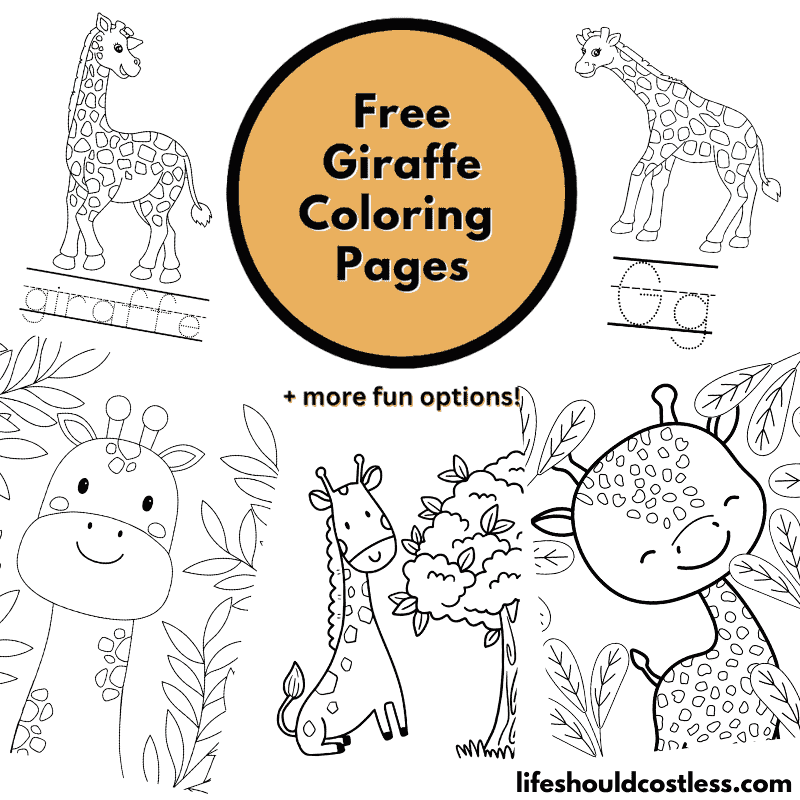
How To Follow & Support This Site
- If you would like to subscribe to my email list, go here.
- Make sure to follow along via social media, by going here.
- If you would like to learn how to really show your support to this site (at no cost to you), go here.
- If you would like to make a direct donation to the site, go here.
Check out my other free printables
- To see all of my free printables, go here.
- If you would like to see an alphabetized index of free printable coloring pages, go here!
- All of my animals coloring pages are found here.
- Or, my other mammals coloring pages can be found here.
Otherwise, here are direct links to several of my other related posts that you’re also going to love:
Animals / Mammals
Animals / Birds
Animals / Insects
Other good resources for a printable giraffe
- https://www.firstpalette.com/printable/giraffe.html
- https://www.online-coloring.com/coloring-page/giraffe-149.html
- https://www.animalstown.com/animals/g/giraffe/coloring-pages/giraffe-coloring-06.php
*This post was originally shared to this blog on 08/02/2023, and has since been updated to improve user experience, add video instruction, as well as to make it as shareable as possible across the social medias.
**Please note that I do try my hardest to provide factual, but easy to understand, information about each topic. If you notice a discrepancy in my coloring pages, facts, or see something that you deem “misinformation/incorrect” please make sure to notify me about it. I would prefer that you send me an email with a link to a more reputable resource on that subject, so that I can correct it as soon as possible. Thanks so much for helping this site become the best that it can be!
***Resources from djinkers were used in the production of this article.
